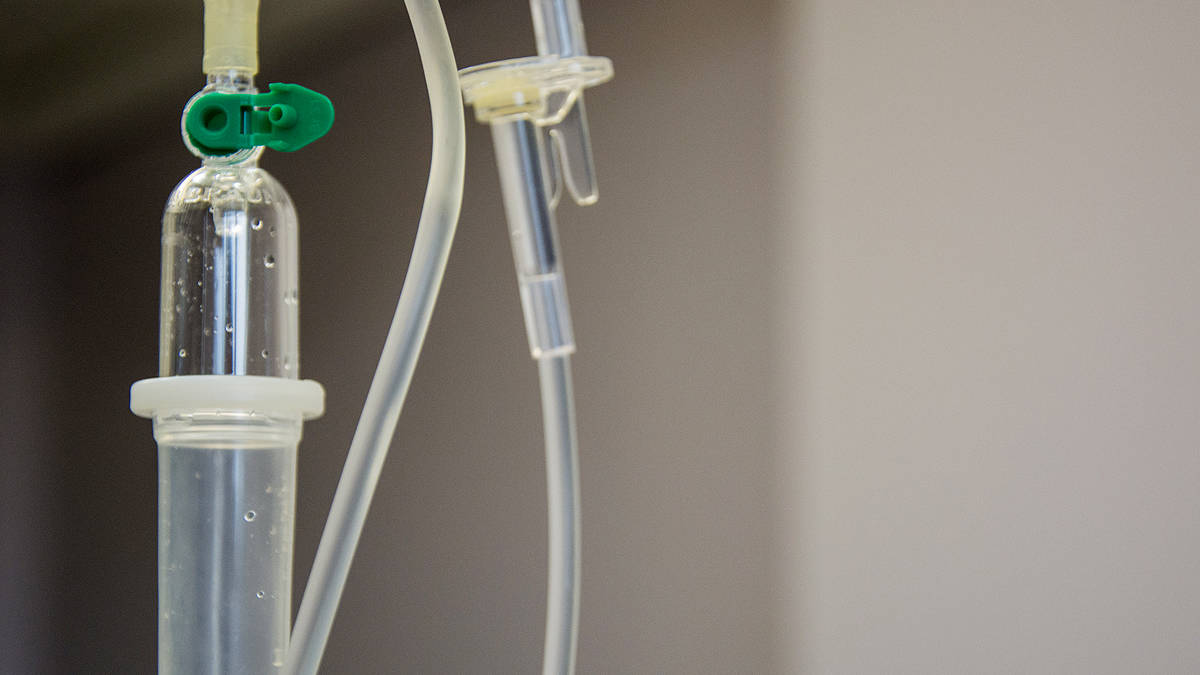5 Unexpected Consequences of Expensive Drugs
high drug prices

Out of control prescription drug prices have become something of a national scandal in the United States. As the cost of some of the most commonly prescribed and life saving medications continues to grow exponentially at as much as five times the rate of inflation, millions of Americans are faced with having to make difficult sacrifices in order to get the medication they need.
The health risks and medical repercussions of expensive and unaffordable prescription drugs are fairly obvious, but there are a number of lifestyle and economic impacts as well that affect individuals, families, and the communities where they live. According to the results of a Gallup Poll, Americans have borrowed upwards of $88 billion to cover medical expenses and treatments.
In addition to skipping medical care and medications because they’re too expensive, many Americans live in fear of going bankrupt if faced with a medical emergency or illness. Even people with six-figure salaries, well above the national median income, admitted to living in fear of personal bankruptcy in the event of a medical emergency or illness, and it’s not hard to understand why.
According to government data, Americans spend over $3 trillion on healthcare related costs, or over $10,000 per person. Healthcare spending in the United States accounts for nearly 18% of gross domestic product (GDP), and has increased 18.9% in the last five years alone.
To make matters worse, healthcare related expenses and the fear of losing everything in the face of an unpredictable medical emergency are only part of the problem. While they may not be the focus of debate when it comes to expensive prescription drugs and astronomical healthcare costs in the United States, here are some of the indirect effects that are punishing millions of American individuals and families.
Delaying or Putting Off College
The student loan crisis has grabbed headlines in recent years, crushing a generation of American students under insurmountable debt. What is often less discussed is the relationship between college tuition, which is already out of reach and unaffordable for so many students and their families, and the rising costs of healthcare. Even students already insured under a family healthcare plan may still be required to purchase additional health insurance through their university, which can add thousands of dollars to their yearly tuition bill.
And that’s just for healthy people with little to no outstanding medical debt or conditions that require prescription medications for short- or long-term treatment. As The New York Times revealed in a profile of several students struggling to meet the financial demands of an education, even medical students at Harvard University are faced with the crushing expenses associated with education and healthcare in the United States, which often go hand in hand:
As soon as Mr. Johnson began medical school classes, the costs began to pile up...Mr. Johnson worked at a Harvard cancer lab just before starting medical school. He sublet his apartment and slept on the medical school campus for several months so he could send his parents the money for a down payment on their home. He had a complication from a knee surgery but delayed visiting the hospital for weeks. The nurses were dismayed to see that a medical student had put off seeking treatment, as he struggled to explain that he could barely cover the bill.
Students from lower income backgrounds are especially at risk of being priced out of an education due to soaring tuition and healthcare costs.
A Vicious Cycle
Without a college education, Americans obviously struggle to find the kind of jobs that will pay an adequate salary, offer professional fulfillment and opportunity — and provide the employer sponsored healthcare plans that the majority of Americans rely on for medical treatment and to cover their prescription medications.
According to The Commonwealth Fund, over 150 million Americans (nearly half) under the age of 65 rely on their employer for health insurance and prescription drug coverage.

Putting Off Getting Married/Starting a Family
Even Americans with “good” health insurance plans are faced with additional expenses that can easily run up to tens of thousands of dollars, forcing them to dip into savings or go further into debt through credit cards and personal loans.
Given the costs associated with maintaining basic health insurance and prescription drug coverage, let alone covering the unexpected bills that go along with a medical emergency or unexpected illness, younger generations of Americans simply don’t have the resources available to invest in major milestones like getting married, buying a home, or starting a family.
In fact, the Millennial generation is among the first to be projected to have less wealth than previous generations. Factors like student loan debt, stagnant wages, and out of control healthcare costs have created a perfect storm of financial insecurity for millions of young and middle-aged Americans. According to a CNBC analysis:
And while student loans play a much-publicized role in the millennial wealth gap, rising health-care costs are part of the equation as well.
"There's an overriding sense of economic insecurity and vulnerability that appears to be impacting life choices," the study's author Reid Cramer tells CNBC Make It.
"There's just less [money] available to do everything else with, including build wealth and save," Cramer says. It's perhaps not surprising that we're seeing this economic insecurity delay future planning and over time, could lead to poor wealth outcomes overall.
Forgoing Home Ownership and the Growing Wealth Gap
With the average costs of buying a home, getting married, and having children continuing to skyrocket while wages stagnate, more and more Americans are not just having to stall or put off major life milestones, they are also being deprived of the opportunities to build generational wealth and financial security.
According to the New America report on the Millennial wealth gap:
Homeownership in America has historically been both a reflection of current wealth and a predictor of future wealth. Becoming a homeowner as a young adult is often a foundational step in the process of future wealth accumulation (Goodman and Mayers 2018). Yet, compared to the prior generations, fewer Millennials are buying a place of their own.
Two significant shifts in housing arrangements have become apparent for Millennials who came of age after the Great Recession: a decline in the rate of homeownership and a rise in the share of those who stay with their parents. Relatedly, household formation, marriage, and child-rearing are down. The impacts of these trends on future wealth could be long-lasting, as many younger adults will have less time to build housing wealth before they reach their retirement age.
Young adults may be especially hard hit by a multitude of economic effects, but the unaffordable costs of prescription drugs and healthcare in general are hurting large portions of American society across age, gender, location and socioeconomic status.
Career and Professional Sacrifices
Sacrificing on education because healthcare and prescription drugs are too expensive and unaffordable is just one way that many Americans are hurting their professional prospects in the short and long term.
With so many adults relying on their jobs to provide both health insurance and the steady and reliable income they need to be able to pay for out of pocket medical expenses and prescription drugs, many people find themselves trapped in jobs they hate or have outgrown just to survive.
Unlike Canadians who enjoy coverage under a national system, Americans can’t take their health insurance and prescription drug coverage with them when they leave or are fired from a job. With the fear of going bankrupt due to a medical emergency running rampant throughout so many American households, taking professional risks is simply not an option for too many Americans.
Stifling Talent and Innovation
The problem is especially obvious in areas like education and the healthcare industry itself, where talented people have to choose between jobs they're passionate about -- like teaching or serving as doctors in shortage areas like general or rural medicine -- or higher paying but less fulfilling jobs that offer more economic benefits.

Pushing Back or Postponing Retirement
On the other end of the spectrum, many older Americans are delaying retirement due to their fears and worries about how they will pay for medical expenses and prescription drugs.
The need (and cost) of medical care and prescription medications generally tends to increase with age, and the average price tag for health-related expenses will make anyone think twice before deciding to take a chance on retirement. According to Forbes:
In The Lifetime Medical Spending of Retirees report, the economists determined that people incur an average of $122,000 in medical costs between the time they're 70 and when they die — mostly paid out-of-pocket, except for low-income people covered by Medicaid.
Some people over 70 face substantially higher costs, however, the study found. 5% will be hit with out-of-pocket medical bills of more than $300,000; 1% will see theirs total more than $600,000.
Strangling an Already Strained Labor Market
When faced with the possibility of having their retirement savings wiped out, or being plunged into staggering debt while living on a fixed income, it’s no wonder that more and more Americans would choose to delay or give up on the idea of retirement at all.
While working longer can have a number of benefits for older adults, it also has an impact on the career opportunities and upward trajectory for younger generations when people stay in jobs longer than previous generations.
Already faced with less upward mobility than their parents’ and grandparents’ generation, younger adults often find themselves in jobs with little potential for advancement because people can’t afford to retire.
Quality of Life Sacrifices
When you can't afford to fill your prescriptions, or have to choose between paying the rent, student loans, credit card bills, or going to the doctor, thinking about "luxuries" like buying a car or taking a vacation can seem downright frivolous and irresponsible.
When every cent of disposable income has to be allocated towards basic necessities, consumers are less likely to indulge in many of the things that their parents took for granted, like taking an annual vacation, buying new clothes, or investing in personal development and continuing education.
Not only can this have an effect on individual mental health and personal wellbeing, it also hurts economic growth on a local and national level.
Living to Work
More and more Americans are finding themselves trapped in a cycle of debt due to the fact that many of the basic necessities of life — like prescription medications for everything from high blood pressure to asthma — have become as expensive as luxury items. In the past, consumer debt could generally be attributed to expenses like vacations or mid to high range consumer purchases like clothing, cars, furniture, and entertainment.
Unfortunately, medical debt has become so prevalent in the United States that fewer and fewer Americans can afford even modest indulgences like the occasional dinner date, or wardrobe upgrades for professional meetings and interviews.
With little to no relief in sight, the problem will likely get worse before it gets better.
Get Help Lowering Your Prescription Drug Costs
The price of unaffordable prescription drugs is hurting the health and bottom line of millions of Americans of all ages and backgrounds.
Our Canadian pharmacy offers affordable prices on many of the medications that American consumers rely on. For more information about how to safely order your medications online from a reputable Canadian pharmacy, contact us today to speak to one of our customer service professionals.